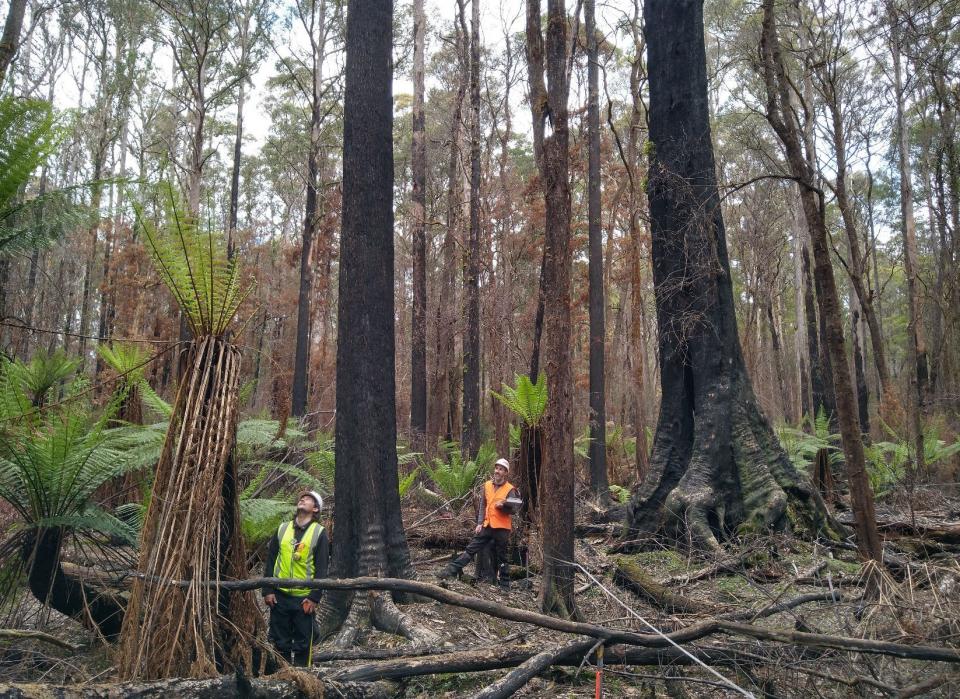
PUBLICATIONS
Published works

Using pre- and post-fire LiDAR to assess the severity of the 2019 Tasmanian bushfires
| Title | Using pre- and post-fire LiDAR to assess the severity of the 2019 Tasmanian bushfires |
| Publication Type | Report |
| Year of Publication | 2021 |
| Authors | Furlaud, JM, Lucieer, A, Foyster, S, Matala, A, Bowman, D |
| Document Number | 698 |
| Date Published | 08/2021 |
| Institution | Bushfire and Natural Hazards CRC |
| City | MELBOURNE |
| Report Number | 698 |
| Keywords | Bushfire, fire severity, Lidar, post-fire, pre-fire, Tasmania |
| Abstract | In January 2019, over 64,000 ha of bushland burned in the Riveaux Road fire in Tasmania's southern forests. Most of area burned occurred in tall wet eucalypt forest. These forests are considered to be highly flammable in dry conditions, but fires are infrequent due to the generally cool, wet climate in which they grow. As a result, limited data exists on the behaviour and effects of wildfire in these forests. Prior to these fires, extensive areas of these southern forests have been studied in-depth. In 2014, a large area of the forests that burned were mapped with aerial LiDAR, a remote-sensing technology that can characterise three-dimensional forest structure. Further, in 2016, detailed field-based measurements of fuel load, structure, and hazard were taken at 12 permanent plots which subsequently burned in 2019. Hence, the 2019 fires in Tasmania represent a globally-rare opportunity to characterise the severity of a large wildfire using pre-fire and post-fire data. In October 2019, the Department of Primary Industries, Parks, Water and Environment (DPIPWE) in Tasmania, along with five other BNHCRC end-users and the University of Tasmania, launched a project to use remote-sensing and field-based data to create a detailed case study of the 2019 Riveaux Rd. Fire, and to untangle the drivers of fire severity in tall wet eucalypt forests. To do this we (i) remeasured plots to assess tree mortality and changes in fuel loads post fire; (ii) acquired LiDAR data from a transect across a burned buttongrass-forest boundary on the Weld River enabling comparison with pre-fire LiDAR data; (iii) established baseline postfire LiDAR buttongrass-forest boundary transect on the Huon River at Blakes Opening. Here we describe the data sets and report some preliminary analyses. |
Published Works


